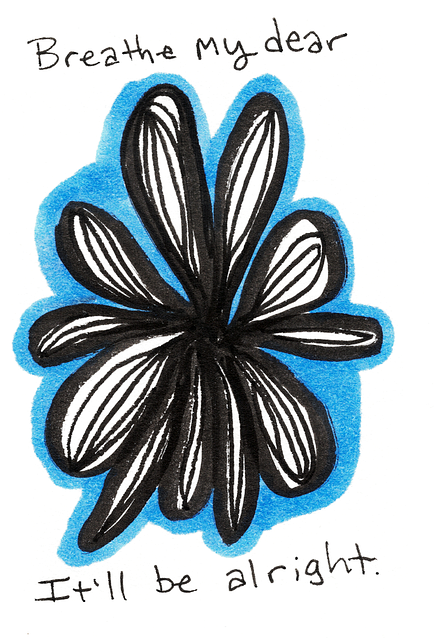Highlands Ranch Play Therapy places unwavering emphasis on client safety through multi-faceted risk assessment, including environmental hazards, play context analysis, and stress management techniques. Therapists are trained in de-escalation, trigger recognition, and cultural competency to create a secure environment conducive to emotional exploration, conflict resolution, and empathy development. They employ comprehensive harm minimization plans, regular reviews, facility inspections, staff training, client feedback, and community involvement to ensure continuous improvement and adaptability. Through these measures, Highlands Ranch Play Therapy offers tailored, effective therapy while fostering mental health awareness and resilience in children.
In the realm of Highlands Ranch Play Therapy, understanding risk assessment is paramount to ensure client safety and foster a nurturing environment. This article delves into the critical components of risk evaluation, focusing on potential harms specific to play therapy settings. We explore strategies for developing comprehensive harm minimization plans, implementing safety measures, and continuously evaluating progress. By embracing these practices, professionals in Highlands Ranch Play Therapy can enhance their approach, ensuring both the security and well-being of every client.
- Understanding Risk Assessment in Play Therapy
- Identifying Potential Harms and Risks in Highlands Ranch Play Therapy
- Developing a Comprehensive Harm Minimization Plan
- Implementing Safety Measures and Monitoring Progress
- Continuous Evaluation and Adaptation for Effective Practice
Understanding Risk Assessment in Play Therapy

Play therapy is a specialized approach that utilizes games, art, and other creative activities to understand and address children’s emotional, social, and behavioral needs. At its core, risk assessment in Highlands Ranch Play Therapy involves identifying potential hazards within the play environment and evaluating their likelihood and impact on participants’ well-being. This process is crucial for ensuring a safe and therapeutic space where children can explore, express themselves, and build essential life skills like conflict resolution techniques and empathy building strategies.
Effective risk assessment goes beyond merely identifying dangers; it also involves analyzing the context in which play occurs. For instance, therapists in Highlands Ranch Play Therapy must consider the physical layout of the play area, the types of activities planned, and the age and developmental stages of the children involved. By integrating stress management techniques into the planning process, therapists can anticipate and mitigate risks, fostering an environment that promotes healthy growth and minimizes potential harm.
Identifying Potential Harms and Risks in Highlands Ranch Play Therapy

In Highlands Ranch Play Therapy, identifying potential harms and risks is a foundational step in ensuring the safety and well-being of clients. Therapists must meticulously assess the environment, activities, and interactions to foresee any possible adverse effects. This process involves recognizing both physical and emotional risks that might arise during play sessions. For instance, certain games or activities could inadvertently trigger traumatic memories or provoke intense emotions, requiring therapists to be attuned and prepared with de-escalation techniques.
Furthermore, promoting coping skills development and self-care routine establishment for better mental health is integral to harm minimization. Play therapy provides a unique platform to teach children and adolescents social skills training, helping them navigate relationships, express emotions, and manage stress in healthy ways. By addressing these aspects proactively, Highlands Ranch Play Therapy aims to create a supportive environment where individuals can explore their feelings, build resilience, and develop the tools necessary to mitigate risks and promote long-term well-being.
Developing a Comprehensive Harm Minimization Plan

In developing a comprehensive harm minimization plan for Highlands Ranch Play Therapy services, therapists must prioritize both mental health awareness and inner strength development in their clients. This involves a thorough assessment of potential risks associated with play therapy techniques, including but not limited to emotional triggers, trauma re-enactment, or inappropriate boundaries. By fostering an environment that encourages open communication, therapists can equip children and adolescents with the tools needed to express their feelings safely.
The plan should also incorporate healthcare provider cultural competency training to ensure inclusive practices. Understanding cultural nuances enables therapists to tailor interventions that resonate with diverse client backgrounds, enhancing therapeutic outcomes. Regularly reviewing and updating the harm minimization strategy is essential to address emerging challenges in play therapy while reinforcing a commitment to ethical practice and client well-being.
Implementing Safety Measures and Monitoring Progress

Implementing Safety Measures is a pivotal step in Risk Assessment and Harm Minimization planning for Highlands Ranch Play Therapy services. Therapists must identify potential hazards within their practice environment, whether it’s play equipment or interaction dynamics, and proactively address them to create a secure space for clients, especially those with past trauma. This involves regular inspections, maintenance of facilities, and staff training on safety protocols. By prioritizing these measures, Highlands Ranch Play Therapy can ensure the well-being of its clients and foster an environment conducive to mental wellness.
Monitoring Progress is equally crucial to the process. Regularly reviewing safety protocols, client feedback, and incident reports allows therapists to adapt their practices as needed. Incorporating Mental Wellness Journaling Exercise Guidance for clients can provide additional trauma support services, promoting self-awareness and coping strategies. Public Awareness Campaigns Development can also enhance community understanding of harm minimization efforts, encouraging a collective commitment to mental health initiatives in Highlands Ranch.
Continuous Evaluation and Adaptation for Effective Practice

In the dynamic field of play therapy in Highlands Ranch, continuous evaluation and adaptation are essential for effective practice. Therapists must regularly assess the evolving needs of their clients, incorporating feedback from both children and parents to refine their approaches. This iterative process allows for a more nuanced understanding of each child’s unique challenges and strengths. By staying agile, therapists can incorporate new techniques, such as conflict resolution strategies tailored to young minds, ensuring that interventions remain relevant and impactful.
The community-oriented approach extends beyond the therapy room through initiatives like Public Awareness Campaigns Development and Community Outreach Program Implementation. These efforts foster a collaborative environment where parents, educators, and community members are equipped with knowledge and resources to support children’s mental health. This holistic strategy not only enhances the reach of play therapy services but also strengthens the overall well-being of Highlands Ranch’s young residents.
In conclusion, effective risk assessment and harm minimization planning are vital components of successful Highlands Ranch Play Therapy. By understanding the potential risks and harms specific to this environment, therapists can develop comprehensive strategies that ensure client safety and foster positive outcomes. Continuous evaluation and adaptation of these plans are essential to maintain a dynamic practice that meets the unique needs of each individual. Through implementing robust safety measures and closely monitoring progress, play therapy in Highlands Ranch can create a secure and nurturing environment for all participants.














